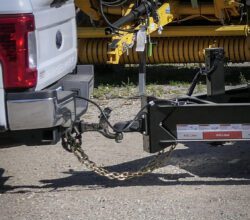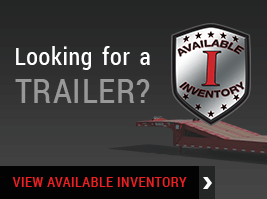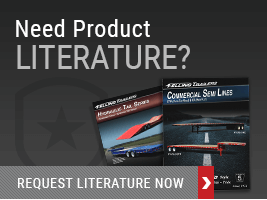When it comes to hauling trailers, safety should always be a top priority. Whether you’re towing a small utility trailer or a heavy equipment hauler, following best practices can make a significant difference in ensuring a safe and trouble-free journey.


Here are some essential towing safety tips to keep in mind:
- Know Your Vehicle’s Towing Capacity: Before hitching up your trailer, understand your vehicle’s towing capacity. Exceeding this limit can lead to reduced control, increased wear on your vehicle, and potential safety hazards.
- Proper Hitching: Ensure the trailer is securely attached to your vehicle’s hitch, using the appropriate hitch size and type. Double-check that safety chains are properly connected and crossed underneath the hitch.
- Balanced Loading: Distribute the load evenly within the trailer, placing heavier items lower and towards the front. Improper weight distribution can lead to swaying, instability, and difficulty in controlling your vehicle.
- Check Tire Pressure: Inspect both the trailer and vehicle tires, making sure they are properly inflated according to manufacturer recommendations. Underinflated tires can lead to poor handling and even blowouts.
- Braking Considerations: Larger trailers may require trailer brakes. Ensure they are functional and adjusted correctly to provide even and controlled braking between your vehicle and the trailer.
- Adjust Mirrors: Extend your side mirrors to get a clear view of both your vehicle and the trailer. This enhances your visibility and allows you to monitor traffic around you.
- Gradual Acceleration and Deceleration: Start and stop gently to avoid sudden jerks, reducing strain on the towing vehicle and minimizing the risk of swaying.
- Mind Your Speed: Adhere to speed limits and drive at a safe, controlled pace. High speeds can exacerbate trailer sway and make it harder to react to unexpected situations.
- Maintain a Safe Following Distance: Give yourself extra room to brake and maneuver, considering the additional weight and stopping distance required when towing.
- Practice Parking: Find an open space to practice parking, reversing, and turning with the trailer. This can help you become comfortable with the trailer’s handling characteristics.
By following these towing safety best practices, you’ll not only protect yourself, your passengers, and other road users but also ensure that your trailer and towing vehicle remain in good condition. Remember, a little preparation and caution go a long way in making your towing experience safe and stress-free.
About Felling Trailers, Inc.
Felling Trailers is a family-owned and operated Full Line Trailer Manufacturer located in Central Minnesota. Started in 1974, Felling Trailers, Inc. has grown from a small shop to a factory and office complex that today covers over 441,000 square feet. Felling’s pride and differentiation is its customized trailer division. Its engineers utilize the latest Industry leading design techniques, and its experienced metal craftspeople use cutting-edge technology to turn its customers’ conceptual trailer needs into tangible products. Felling has been providing innovative trailer solutions to the transportation industry for nearly 50 years. Felling Trailers’ current capabilities allow them to provide a high-quality product that is distributed across North America and internationally. Felling Trailers, Inc. is an ISO 9001 Certified Quality Management System Company, WBENC-Certified WBE, and an Equal Opportunity Employer.
For more information, contact 1.800.245.2809, [email protected], or visit us on the web at www.felling.com. You can also follow us on Twitter (@FellingTrailers), Facebook (Felling Trailers, Inc.), and Pinterest.













Speak Your Mind